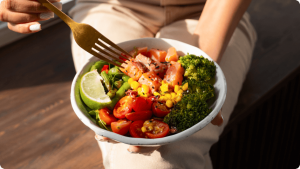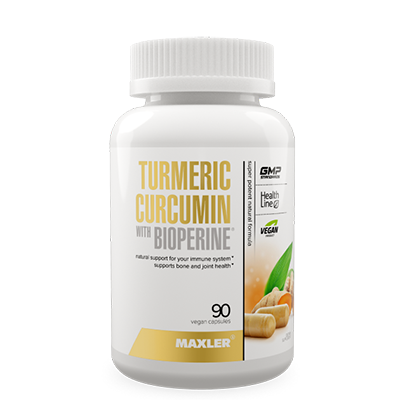Does the word inflammation bring up unsightly pictures in your mind or send shivers down your spine? It can be confusing and even a little daunting trying to understand what inflammation is and what it does to the body. In this post, we’ll be looking at what inflammation is and how you can naturally reduce it with the help of your meals – think of its as a primer about an anti-inflammatory diet for beginners. Ready to jump on the anti-inflammatory train?
What inflammation really is
This big and scary word is often associated with the hot swelling of getting a cut. This type of inflammation is key for our health, as it helps defeat pathogens and keep the body free from other harm. However, should the response to an external attack not be taken care of fully, low-level inflammation can persist. Chronic inflammation has been linked to many illnesses in the Western world1.
Why should you eat an anti-inflammatory diet?
The foods found in an anti-inflammatory diet provide plenty of beneficial nutrients. Additionally, they can decrease markers of inflammation in the body. It may be able to lessen symptoms of chronic conditions and might lessen the chances of certain diseases2.
The basics of the diet
To help you get started we’ve assembled some key inflammation-reducing foods in this list. You can try incorporating more of each of these foods in your routine. Try building your meals around these foods that fight inflammation.
Stock up on fishy protein. Omega-3s found in fish are wonderful inflammation-hinderers. Choose fish that is rich in these fats, like salmon, mackerel, or even canned sardines3! Alternatively, give an omega-3 supplement a go.
Fruits, greens, and veg should be prioritized. These plant foods contain phenolic compounds, which have anti-inflammatory properties. These include things like flavonoids, isoflavones, and polyphenols, so next time you hear about those in fruit or veg, add them to your basket4. You can even blend more than one to make anti-inflammatory juices.
Load up on beans. Many anti-inflammatory diets, like the Mediterranean diet, prioritize plenty of pulses. They have compounds that can lower inflammation, such as antioxidants, saponins, and polyphenols5. If you’re vegetarian or if you eat a lot of beans, remember that they’re not complete proteins. To add some amino acids that they might be missing, why not supplement them directly? Try Maxler BCAA 4800 – a great boost for your muscles.
Choose healthy grains. If you can’t live without grains, pasta, and bread, don’t worry. An anti-inflammatory diet makes an allowance for high-fiber unprocessed gains6. These include common anti-inflammatory oats, brown rice, barley, and even corn7!
Healthy fats from healthy sources. Fats are important for the body, not only for energy but also for absorbing nutrients and making certain hormones. Pick healthy sources of fat, like olive oil and nuts8.
Don’t be afraid of spices. Many spices contain beneficial compounds that are anti-inflammatory. One of those is turmeric, which is easy to add to food9. For a boost of highly bioavailable turmeric curcumin, try Maxler Turmeric Curcumin with BioPerine – a great option for those who don’t quite like the spice’s taste.
Choose your cooking methods. While frying is often easier, baking or steaming might be better for your health and contribute to lower inflammation10.
Top tips on getting started
Now that you’re well-equipped to understand what an anti-inflammatory diet is, it’s time to go through some tips that can help you stick to it:
- Start slow – think of small changes and change one thing at a time, so you won’t feel overwhelmed
- Plan what you eat – it’s easier to cook and shop if you know what you’re having in advance
- Try new things – many spices that you’ve not tried before can be anti-inflammatory, so give them a go and spice up your plate
- Think smart snacks – when you need a quick bite, processed foods are usually the most convenient. Being smart about your snacks can help you keep tackling inflammation, bit by bit.
- Stay hydrated – add Electrolyte Powder to your drinks if you need extra help absorbing water.
- Listen to yourself – as with any change, remember to listen to your body. Be kind and feel free to adjust should you need to
An anti-inflammatory diet doesn’t have to sound hard or exclusive. By using household staples, and prioritizing foods that are rich in beneficial nutrients or foods that fight inflammation, you can help your body tackle the challenge. So, get out there, and try new foods, new spices, and new meals to get closer to a healthier and happier you.








